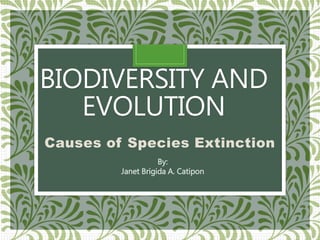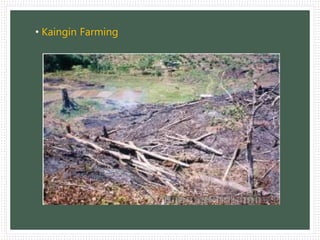This document discusses the causes of species extinction, including deforestation, pollution, habitat destruction, and overpopulation. It defines key terms like biodiversity, extinction, and species. Several human activities are highlighted as contributing to extinction, such as illegal logging, kaingin farming, water pollution from domestic waste and factories, air pollution from vehicles, and destruction of coastal ecosystems through dynamite fishing and development. The greenhouse effect and climate change are also discussed as global issues exacerbating extinction. In summary, the document outlines the biological concepts of extinction and biodiversity before examining various human-caused threats driving increased species loss.



































